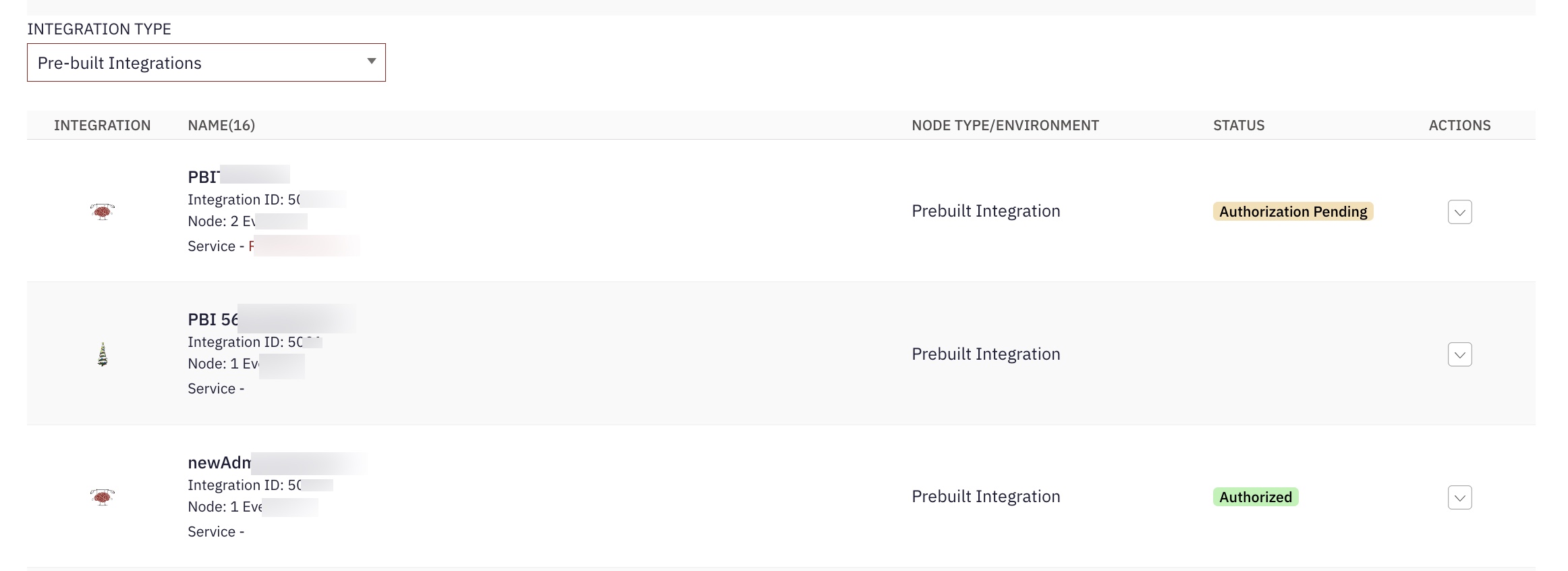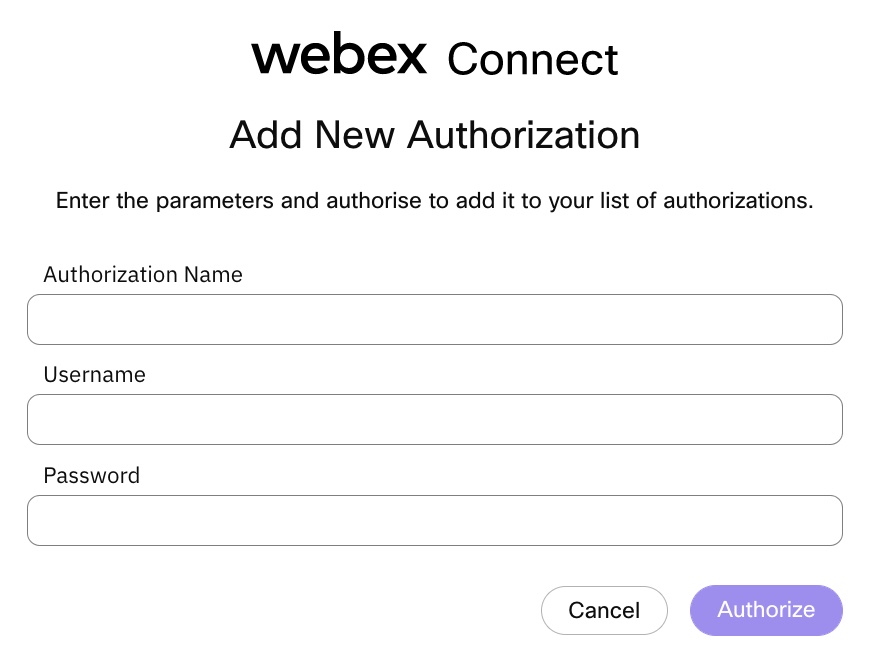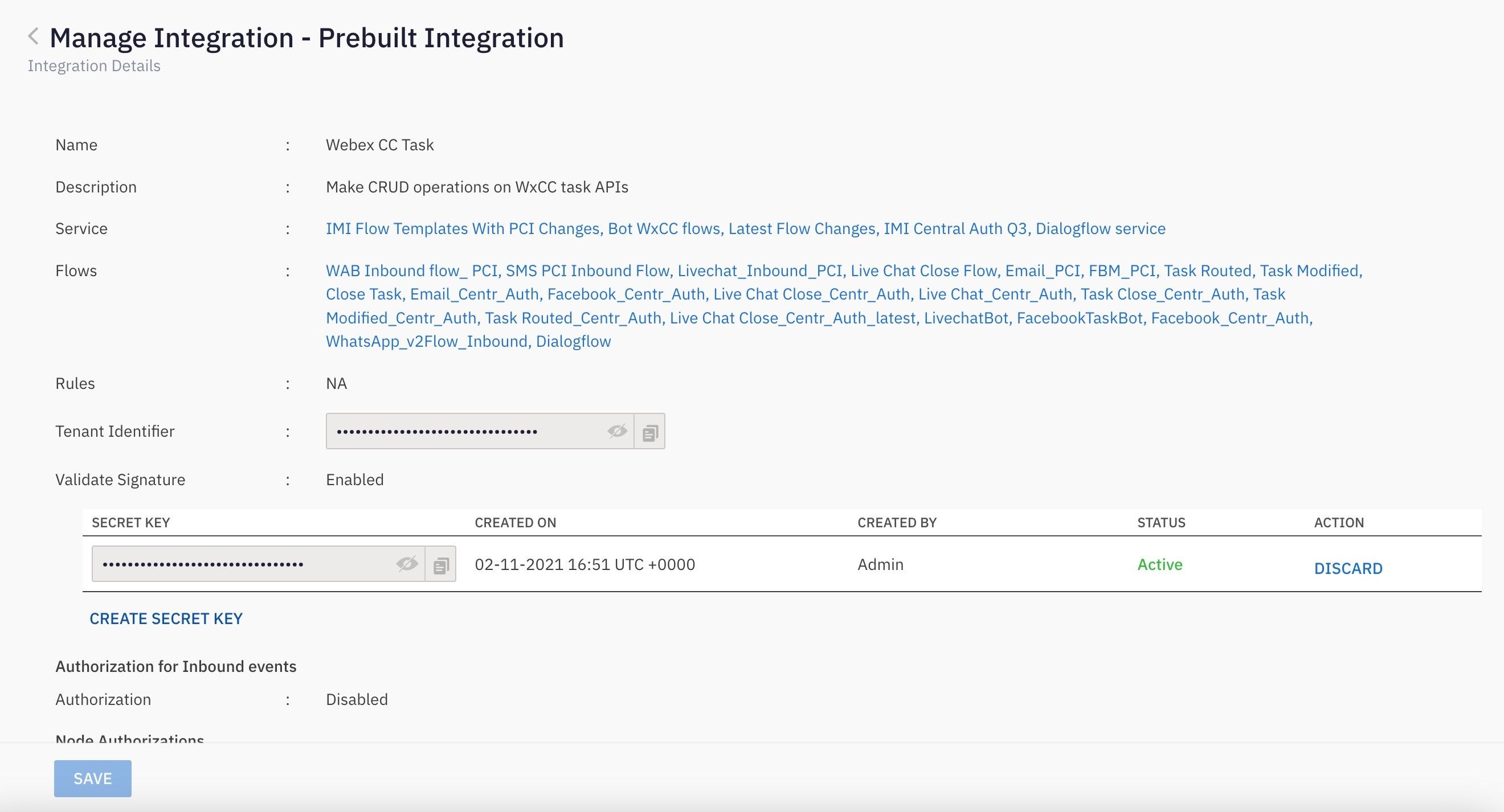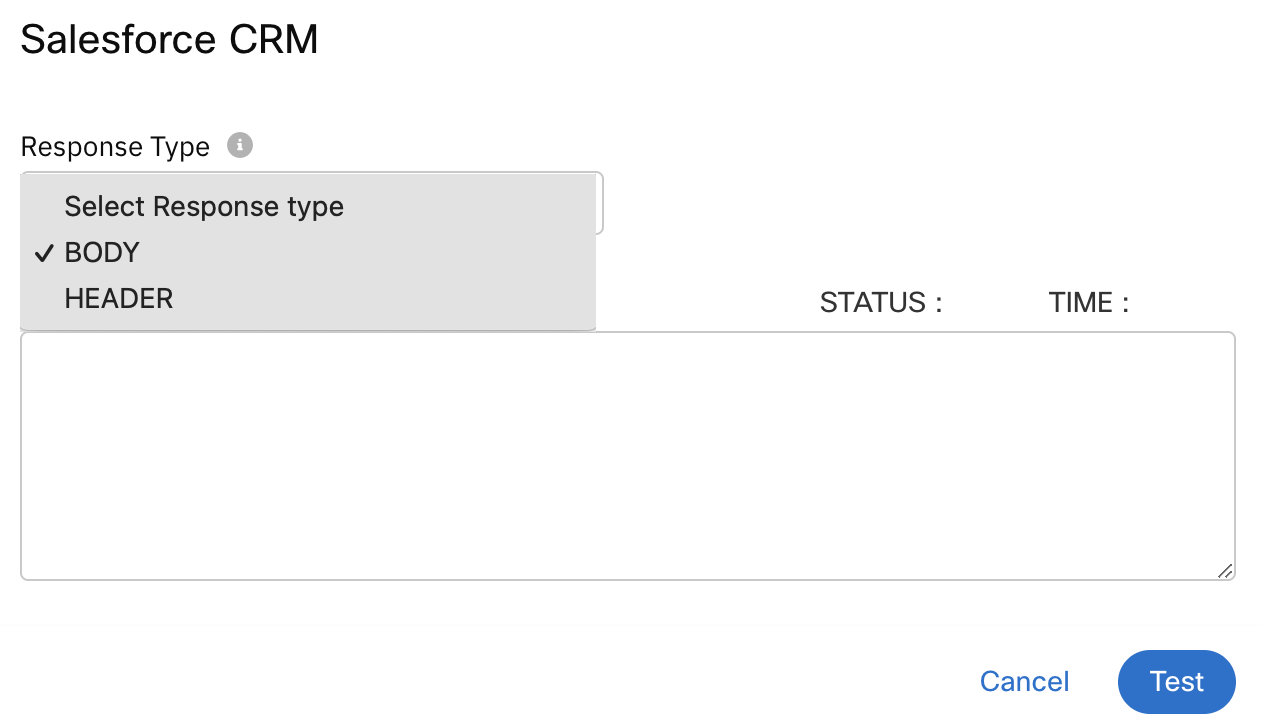Pre-built Integrations
When Pre-built Integrations are enabled for your tenant, you can view all the pre-built integrations available for your tenant in the Webex Connect portal. These integrations will be listed in the Integrations section of the portal. You can also view all the events and nodes associated with the available pre-built integrations.
To view a pre-built integration:
- Log in to the Webex Connect portal.
- Navigate to Assets → Integrations.
- Use the filter to select Pre-built Integrations under the Integration Type.
The list of all the pre-built integrations available for your tenant are displayed. - Select Manage or View under Actions for the integration you want to view.
To Authorize a Pre-built Integration
- Navigate to Assets → Integrations.
- Select Pre-built Integrations under Integration Type, to display the list of all pre-built integrations.
The integrations which are not yet authorized show the status as Authorization Pending.

- Click Actions → Manage associated with the integration you want to authorize.
- On the Manage Integrations page, scroll down to the Node Authorizations section. This section lists all the authorizations mapped to this integration.

Note
Deleting 'Default Authorization' is not allowed, as it might be used in live/draft flows. Please change the default authorization before attempting to delete it.
- Click Action → Add Authorization associated with the authorization, where Auth Type is oauth2 and Status is Authorization Pending.

-
Enter all the required fields. The authorization configuration and the parameters/variables depend on the type of the authorization. Please note that the variables are case-sensitive.
-
Click Authorize.
The status of the authorization will change to Authorized and all the nodes under this authorization are authorized and ready for use.
Once authorized, you can perform the following actions on the authorization.
- View - allows you to view the authorization.
- Update - allows you to update the authorization details.
- Make it as default - allows you to make a particular authorization default for that node.
- Remove - allows you to delete the authorization.
Note
If an OAuth 2.0 type authorization is edited in the Admin portal, you will be prompted to re-authorize the authorization.
You are not allowed to delete the authorization if it is mapped/used in flow assets.
Note
If your integrating system provides or throws an error during authorization (the error can be because of multiple reasons - credentials expired, over use of credentials, or over use of client ID etc) the error details are shown in a pop-up. If your integrating system does not provide any description, the error details will be empty/not available in the pop-up. On successful authorization, the token is generated. You will see a green toast message as a successful confirmation.
Nodes and Node Versions
You can view the node versions of a particular node by expanding the Node.

Note
Different node versions can have different authorizations configured. If multiple auth mechanism are added by admin for a node and the latest version of the node only requires one of the auth mechanisms, then even is you have authorized the latest auth, the status of the old auth mechanism will show as pending.
Persisting the field values for pre-built integration nodes
When the Authorization is changed, you will have to add a new Authorization. The previous relevant Authorization details will be retained in the new Authorization.
If the node UI is directly calling an API for rendering the field values, the authorization details will not be retained.
Validating Signature while regenerating a Secret key for Prebuilt Integration
When signature validation is enabled for pre-built integration the platform user will be able to view that in enable state on manage integrations page. Creating and discarding a Secret Key is only allowed to the tenant owner and restricted for all other user roles.

Note
The secret key will be updated if notifications are enabled for the selected integration and will only be updated if the notification is successful.
Testing Pre-built Node
After you provide all the required parameters for configuring the Pre-built node, test it to make sure that the configuration works.
- Click Test. The Test pop-up appears.
- Specify the Request Parameter.
- Select the required Response Type from the dropdown.
- Body: Under the response type body you will get the text received in the body of the response.
- Header: Under the response type header you will get the text received in the header of the response.

Note
If you have configured any variables, you must pass the values to the variables.
- Click Test to test the Pre-built node.
Updated 4 months ago
